City Wildlife has received a lot of attention from the media since we opened our Rehabilitation Center in 2013. Take a look below to see some of the articles about us or by us.
NPR: As birds migrate south, there’s an invisible danger: glass
October 7, 2025
“It’s just – it boggles the mind to think that these little guys can fly over the Gulf of Mexico. Just how do they manage that? It’s amazing. But then we take them out with some glass.”
WTOP: DC Health urges residents to take precautions after several birds test positive for West Nile virus
August 20, 2025
“D.C. Health said a partner agency, City Wildlife, tested four American crows and the results came back positive.”
Washington Post: Birds kept dropping dead. A D.C. biologist cracked the case.
August 9, 2025
“A woman had come out of her Capitol Hill rowhouse one evening to weed-whack her yard when she found two dead birds.”
Washingtonian: Meet the Duck Whisperer of D.C.
May 12, 2025
“Rooftop gardens, office buildings, and backyards are attracting nesting water fowl, and April Linton is on the case.”
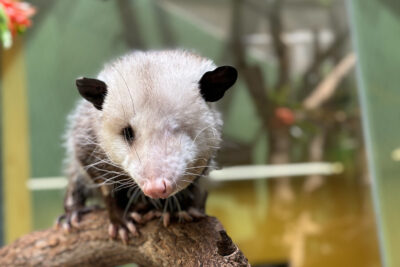
Smithsonian’s National Zoo: Remembering Basil, Our Virginia Opossum
May 6, 2025
“In 2023, Basil was found injured from a predator attack. He was brought to City Wildlife…As an animal ambassador, Basil reminded us all how vital it is to appreciate and protect local wildlife.”

Washington Post: Mother duck lays 8 eggs on downtown D.C. building’s rooftop terrace
April 17, 2025
“The ducks are taking advantage of habitat we’ve built,” Linton said. But one logistical factor that ducks don’t consider when setting up a nest on a rooftop, she said, is that they won’t be able to get their ducklings down, given that their little ones don’t develop their wings to fly until about 11 to 12 weeks after hatching.
Hill Rag: What Lies Beneath RFK? Environmental Concerns Challenge Site Development
April 11, 2025
“It’s an opportunity to create additional habitat and plant more trees,” said City Wildlife’s April Linton. She emphasized the importance of natural habitat for wildlife, adding the benefits extend to people.”
The Washington Post: A duck — and her ducklings — find an unlikely home in downtown D.C.
March 11, 2025
“About 4:30 p.m., Erica Knight, a volunteer with City Wildlife’s Duck Watch program, pulled up on a bicycle. Volunteers monitor mallard nests and try to protect ducklings as they invariably head for water after they hatch. She keeps an eye on downtown, Penn Quarter and Chinatown in the spring and summer, when mother mallard ducks lay eggs in parks and planters and on roofs across the city.”
The Washington Post: Rat poison is sickening and killing D.C. wildlife, study finds
March 10, 2025
“A wildlife rescue center in D.C. has found that an increasing number of birds and mammals across the city are consuming, falling ill and dying from rat poison.”
Hill Rag: The District Vet: Yes, Avian Influenza Can Be Passed to Pets
February 18, 2025
“Sarah Sirica, a veterinarian and Clinic Director for City Wildlife in Washington, DC, an organization which rehabilitates injured and orphaned wildlife, said approximately 10% of City Wildlife’s patients were from an attack by a cat. This includes birds and over 50 different species of animal. She continued, “There are many reasons to encourage everyone to keep their cats inside, and I’m afraid we now have one more to add to the list.”
Audubon Magazine: LEED’s Green Building Rules Are Becoming More Bird-Friendly—Do They Go Far Enough?
February 3, 2025
“The world’s top system for certifying environmentally conscious design is putting more emphasis on preventing bird-building collisions, but critics say it’s still too easy for builders to skip measures that could save avian lives.”
WUSA9: Taking Flight: Local volunteers work to save birds from window collisions
September 3, 2024
“As millions of migratory birds fly over the District, one organization is working to help mitigate window collision deaths.”
Science: Rat Poison’s Long Reach
July 2024
“Supertoxic rodenticides are building up inside unintended targets, including birds, mammals, and insects. Scientists want to understand the damage—and limit it.”
Washingtonian: These Volunteers Wake Up at Dawn to Collect DC’s Dead — and Injured — Birds
“Millions of migrating birds fly over DC each spring, but many don’t make it. That’s where these folks step in.”
Hill Rag: Lights Out!
April 15, 2024

WTOP: Teens get a chance to explore veterinary careers thanks to DC-based rescue group
February 2, 2024
“When addressing high school students, [City Wildlife Clinic Director] Sirica said she would stress that, “we work hard every day, and it’s not necessarily the kind of job where you can coast.”
The Washington Post: An owl got stuck in an iconic sculpture. After rehab, it’s free again.
October 29, 2023
“Within an hour of its rescue, the owl was delivered into the care of City Wildlife, an animal rescue center in D.C.”
CBS Evening News: How small changes to buildings could save millions of birds
August 6, 2023
“We’re part of this problem and we can be part of the solution.”
The Washington Post: A duck named Gertrude became beloved where he didn’t belong: the wild
July 12, 2023
“Gertrude made people notice nature but he also made people notice one another. He brought people together.”
WUSA9: Turtle spotted riding Blue Line Metro train
June 30, 2023
The Atlantic : What Do I Do With This Baby Squirrel

“Kingman and Heritage Islands are extremely important for wildlife in the District. It’s some of the very best habitat that we have left, and the wild animals cannot move elsewhere. There is no suitable place that still has room for more wildlife… If people knew how much damage an off-leash dog does to ground-nesting birds and wildlife in general, they would be eager to keep their dog on leash.”
Take a walk on the wild side at City Wildlife, DC Refined, August 2018
“When an animal gets in trouble, they often end up at City Wildlife, a animal care and veterinary facility that focuses on local wildlife. Although members of the public can’t come in and visit, except for special events, the staff has their hands full with animals they hope to rehabilitate and release back into the wild.”
How Valor (The Eaglet) Was Lost, Then Found in Northeast D.C., WAMU, July 2018

.
.
Young bald eagle falls from nest, found on sidewalk in Northeast Washington, The Washington Post, July 2018
Ramps return to Capitol Reflecting Pool to help ducklings, WTOP, April 2018
“Lewis said the minor issues with the ramps have been worked out. Sides to the ramps were added to keep the ducklings from falling over, and more traction has been added to the surface to keep the ducklings from slipping.”
Does that baby bird on the ground need you help?, The Washington Post, April 2018
“For a baby bird, the kind of help it might need depends on its stage of life. A nestling might simply need to be placed back in its nest with help from an adult human. But if the baby bird is slightly older (a fledgling that has left the nest but is still under parental care), it may be best to leave it alone.”
In DC, It Is Easy Being Green, On Tap Magazine, March 2018
“City Wildlife has launched several important wildlife conservation programs in the city. Lights Out DC works to encourage businesses and residential buildings to reduce or turn off their lights at night to avoid attracting migratory birds, and the Duck Watch program helps keep DC’s many mallard duck moms and their babies safe during the nesting season.”
Bald eagle dies in DC from lead poisoning, WUSA 9, December 2017
“The adult bald eagle was discovered near a Maryland highway, disoriented and not able to walk. The team of wildlife rescuers at City Wildlife suspected lead poisoning.”
Poisoned Bald Eagle Highlights Lead Bullet Controversy, National Geographic, December 2017
“‘It’s not uncommon,’ she said for the center to treat lead-poisoned birds. But more often, they deal with pigeons that ingest lead at construction sites. Eagles, however, tend to ingest lead when they consume animals that have been shot with lead bullets.”
Why Does a City As Dense As D.C. Have So Much Wildlife?, WAMU 88.5, December 2017
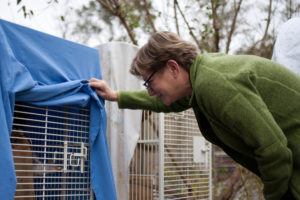
.
.
Eagle poisoned with lead dies, The Washington Post, December 2017

.
.
.
.
Bald eagle undergoing treatment for lead poisoning in DC dies, WTOP, December 2017
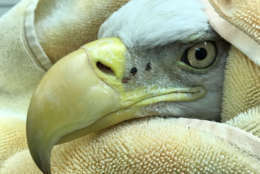
Flying the friendly skies: An owl takes flight, but not in the way you’d expect, The Washington Post, October 2017

.
.
.
Injured bald eagle, likely Liberty or Justice, gets treated a day before July 4, The Washington Post, July 2017

.
For the Birds: Flock of D.C. volunteers proves ‘Lights Out’ in buildings saves lives of winged migrants, Renewal News, June 2017
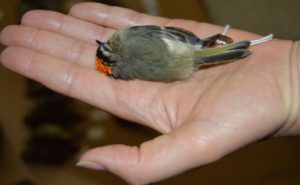
.
Duck ramp at U.S. Capitol causes stir online, WUSA9, May 2017
Congressman cries foul over Capitol Hill duck ramps, WJLA, May 2017
“City Wildlife president Anne Lewis said her organization received many calls about ducks in distress. She said the problem at the reflecting pool is that ducklings are not able to climb over the pool’s edge.”
Architect of the Capitol builds ramp so ducklings can easily enter, exit reflecting pool, WJLA, May 2017
“The Architect of the Capitol said they consulted with City Wildlife before holding a ‘design charrette to determine the best ramp design to allow ducks of all ages to enter and exit the pool easily over the existing limestone curb.'”.
Ducks Get Ramps For Easier Access To Capitol Reflecting Pool, DCist, May 2017
“Before, mallards had trouble scaling the “broad gently sloped limestone coping of the pool,” the Architect of the Capitol says in a blog post announcing the change. Indeed, curbs down by the Mall often challenge ducklings who struggle to hop over them.”
Duck Ramps Appear at U.S. Capitol, but Not Everyone Is Pleased, The New York Times, May 2017

Effort launched in DC to keep birds from flying into buildings, WTOP, May 2017

Birds of a feather flock together on a downtown street corner, The Washington Post, April 2016

.
City Wildlife nurses baby squirrels and finds them new homes, The Washington Post, October 2015

National Geographic’s Ducks Are Having a Tough Winter, National Geographic, February 2015
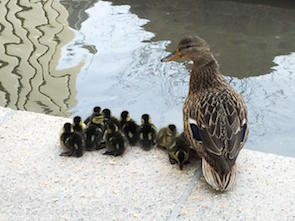
Glass Architecture is Killing Millions of Migratory Birds, Quartz, March 2015

Lights Out Effort Reduces Deadly Bird-Building Collisions, Voice of America, December 2014

Victim of downtown D.C. egg thefts is a sitting duck, The Washington Post, June 2014

.
After a tumble from a tree, a baby squirrel becomes a starlet, The Washington Post, April 2014
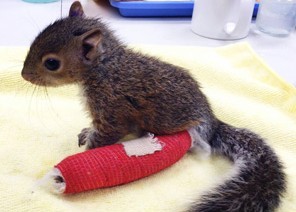
Snowy owl kept in cold isolation for healing after run-in with Metrobus and SUV, The Washington Post, February 2014

When D.C.’s squirrels, birds and other wild animals need help, City Wildlife is there, The Washington Post, October 2013

City Wildlife, D.C.’s First Wild Animal Rehabilitation Center, Tends To Squirrels, Raptors, Humanity, Huffington Post, September 2013


